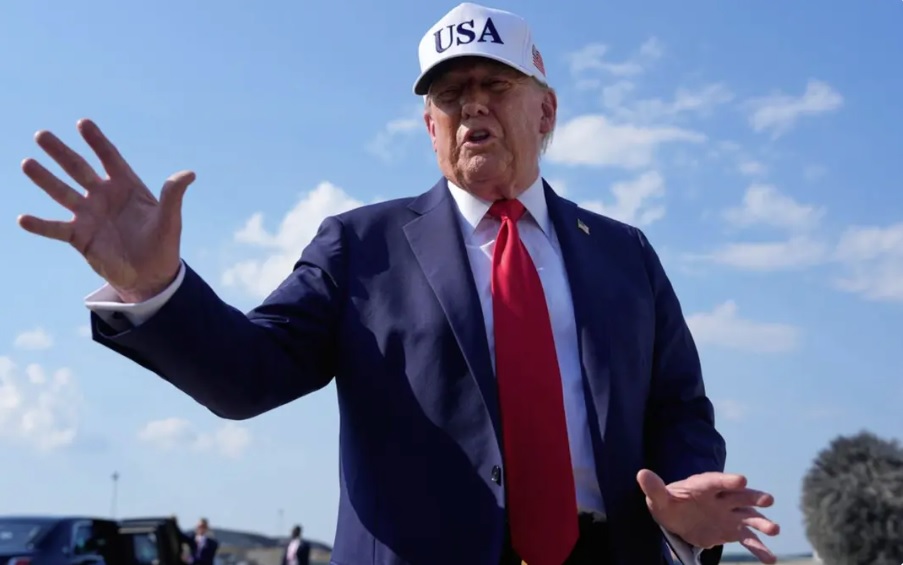How will the US dollar move if new tariffs spook asset prices?
If this week’s tariff reveal from the Trump administration provokes another bout of heightened risk aversion will the US dollar rise, as befits its customary safe-asset status, or fall because that status is in question?

President Donald Trump said tariff notices would be sent to 10 countries at a time, with rates between 20% and 30%. (AP pic)
It is difficult to envisage that this week’s unveiling of new tariff levels will produce the scale of asset price implosion that we saw after the ‘liberation day’ tariff announcement on April 2nd. The plunge in equities, in particular, was dramatic, and the vulnerability of treasuries was so great that Trump was forced to postpone the full tariffs until this Wednesday (although the new tariffs will not come into effect until August 1st).
What was notable about the post-April 2nd reaction was that all US assets fell: stocks, bonds and the US dollar. The weakness in the US dollar defied the customary association between the level of risk in the market and the level of the US dollar.
In short, the greenback’s safe-asset qualities seemed to disappear – as they did for treasuries as well. The question now is whether this is a role reversal that will stay the course. Namely, will surges in risk, perhaps associated with this weeks’ tariff announcement, see the US dollar lose more ground? Or was the April slide a one-off suggesting, that the US dollar will rise if new tariffs spook asset prices?
Steven Barrow, Head of Standard Bank G10 Strategy, thinks there are arguments on both sides of the debate. We will start with the ones that suggest the US dollar will rise if risk aversion surges this week, or in the near future. The lack of US dollar strength after the shock of the liberation day tariff announcement may have come down to the fact that the huge slump in US equities caused international investors to quickly undergo a fundamental re-assessment of US asset attractiveness relative to peers.
In short, the desire to sell US assets quickly by global investors, including treasuries as well as stocks, overwhelmed any safe-asset flows into the US dollar. There is certainly anecdotal evidence and some hard data (from the US TICs numbers) to suggest that there was a wholesale exit from US bonds and stocks after April 2nd.
Coming back to today, while it is possible that this week’s tariff reveal will scupper US stocks and treasuries anew, it is likely to be the case that global investors are not as over-exposed to US risk as they were back in April and, if that’s the case, any safe-asset demand for the US dollar could show through more than we saw three months ago. Arguments on the flipside, which suggest that the US dollar will slide if risk aversion surges, include the fact that the US Administration has undermined the dollar’s standing even more since early April via the very expansive fiscal package announced last week as well as the near-constant attacks on Fed Chair Powell by President Trump.
Another point Steven Barrow would make, and had made before liberation day, is that the dollar’s safe-haven allure appeared to have retreated even before President Trump took office for a second term. He ascribes this partly to the provision of central bank liquidity swaps by the Fed. For even though these are not always used when risk-aversion surges, the mere fact that they are there to offer a guarantee of US dollar liquidity takes away some of the need for investors to panic when uncertainty rises.
During Covid, for instance, we only saw a brief rise in the US dollar as the pandemic started to develop and it is worth noting that the bulk of 2020 actually saw the US dollar fall, not rise. Of course, there have been question marks over the US’s willingness to continue to supply US dollars in this way, but we have little doubt that this liquidity provision will endure.
“All told, we lean to the argument that the US dollar will not receive significant support should the next tariff reveal this week hit asset prices hard. On the contrary, there could be another notable slide although our base case is that the market will respond to the coming tariff reveal in a much more sedate way than it did to the April 2nd bombshell”, said Steven Barrow.








